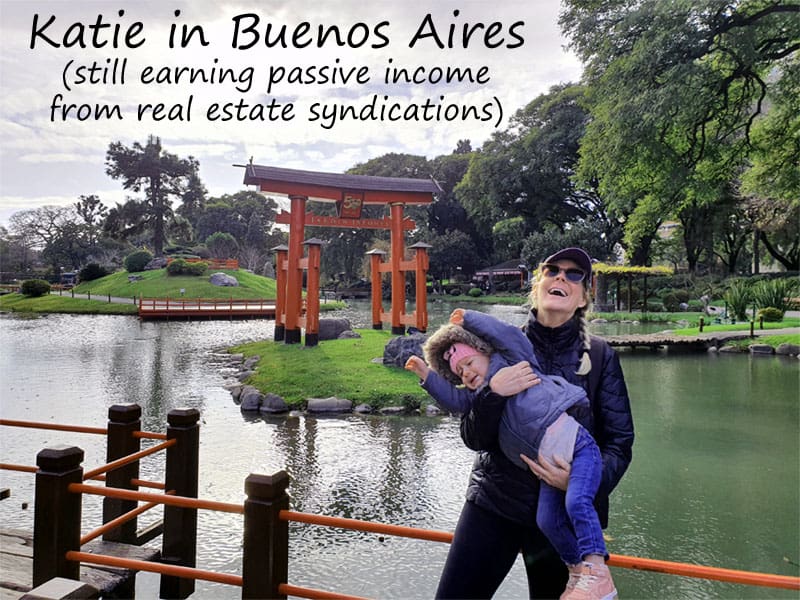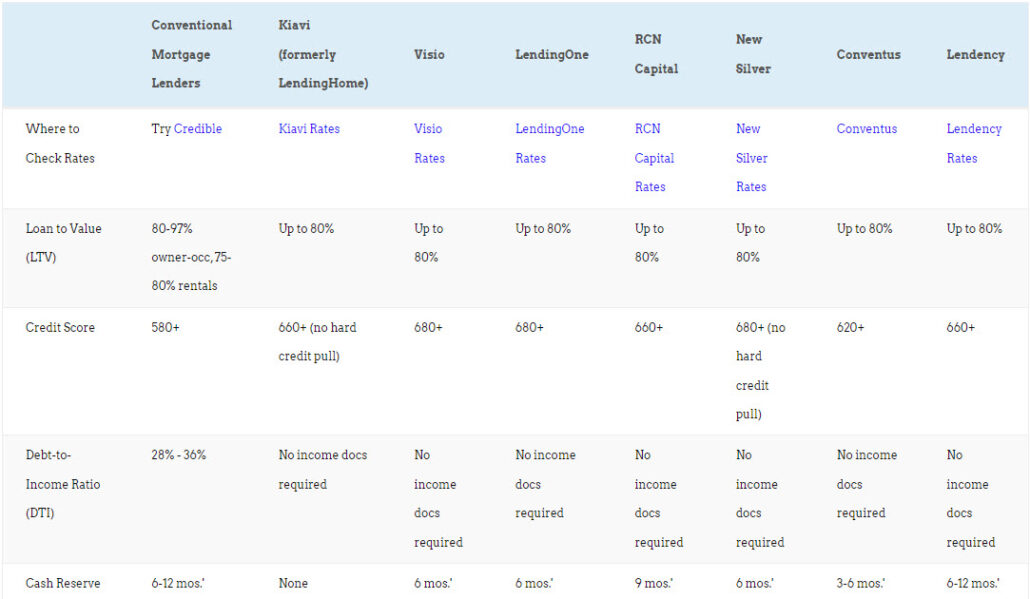
Almost half of California’s residents live in rentals. The cost of living, especially rental rates, has risen dramatically over the last two decades, creating some of the least affordable rental housing in the world in many California cities.
California’s response? Rather than building more housing supply, they try to force rents lower through government regulation. Read: rent control.
Rent Stabilization vs. Rent Control in California
Rent control is used to describe legislation that puts a cap on the rental rates in any given state or city. While imposed at the local level, the common theme among rent control laws is restricting rents to specific dollar amounts and eliminating evictions. For instance, rent controlled apartments in a given neighborhood might be allowed to charge $1,200 per month for one-bedroom apartments, $1,300 per month for two-bedroom apartments, and so on.
Rent stabilization works differently, capping the allowed rent increases as a percentage of the rent. For example, if a city restricted rent hikes to 4% per year, a landlord renting an apartment for $1,000 could raise the rent by no more than $40 over the next year.
Not all cities in California impose rent control or rent stabilization rules. That’s why every real estate investor should not only review a particular state’s and city’s laws on taxes and other property fees but also how friendly or unfriendly the state and local laws are to landlords before investing.
Note that there’s no statewide rent control in California, but there is statewide rent stabilization.
California Rent Stabilization Law
In 2019, California passed AB-1482, also known as the Tenant Protection Act of 2019. It imposes statewide rent stabilization and requires landlords to renew virtually all lease agreements.
The law restricts rent increases to no more than 5% each year, plus a local cost of living increase allowance of up to 5%. The cost of living adjustment is capped at the change in the local consumer price index.
So, California landlords may raise rent by between 5-10% each year, depending on the cost of living change. The law applies retroactively to March 2019 as the baseline rent amount.
The restriction on rent hikes doesn’t apply when a rental unit turns over. After a tenant moves out and the property owner relists it for rent, they can list it at today’s market rent. But landlords can’t non-renew existing tenants’ lease contracts, with a few rare exceptions (more on these momentarily).
The Tenant Protection Act of 2019 does not specify an enforcement mechanism. Tenants must hire an attorney to sue their landlord to enforce violations.
This statewide rent stabilization law will expire on January 1, 2030 unless legislators extend it.
Forced Lease Renewals
The California law labels non-renewal of lease agreements as “no fault evictions.” It only allows landlords to non-renew tenants after their lease contracts expire under the following circumstances:
- The owner moves into the unit themselves,
- The owner converts the unit into a condominium, or
- The owner renovates or demolishes the unit.
In these cases, the landlord must pay the tenant a “relocation fee” equal to one month’s rent.
Once you sign a lease with a renter, you’re typically stuck with them until they decide to move on their own.
You can still file for an “at fault eviction” if the tenant explicitly violates the lease contract. But if the renter is simply dirty, or makes you chase them for rent payments, or causes a lot of wear and tear on your property, you’re likely stuck with them until they move out voluntarily.
How Often Can a Landlord Raise Rent in California?
Landlords with long-term lease agreements of a year or longer can raise the rent up to once a year.
For month-to-month rental agreements, landlords can raise the rent up to twice a year under AB-1482.
How Much Notice Period is Required When Raising the Rent in California?
It depends.
If you plan to raise the rent by less than 10% and the tenant has lived there for less than a year, you must give them 30 days’ written notice. For renters who have lived in the property for a year or longer, you must provide 60 days’ notice.
If you plan to raise the rent by more than 10%, you must provide 90 days’ written notice.
“But wait a minute, I thought you said landlords can’t raise the rent by more than 10% in a year?”
The Tenant Protection Act of 2019 does offer a few exceptions for rent hikes.
What Buildings Are Covered Under AB1482?
The statewide California rent stabilization law only applies to buildings older than 15 years. For the first 15 years after a building is built, it can charge market rental prices and increase them based on rental market demand.
The law also exempts the following buildings from the rent increase limits:
-
- Single-family homes and condos which are not owned by a corporation, a corporation-owned LLC, or REIT
- A duplex where the landlord lives in one of the units (house hackers)
- Mobile homes
- Schools and college dorms
- Hotels
- Rental properties managed by non-profit organizations
The statewide rent hike restrictions also don’t apply in areas with stricter rent control policies.
California Cities with Rent Control
A dozen of California’s cities impose rent control on landlords. Make sure you understand all the laws and restrictions before you invest — or better yet, invest in more landlord-friendly markets.
1. Berkeley
Most of Berkeley’s multi-unit properties built before June of 1980 are covered by rent regulations. Not only does the legislation put a cap on the rent but also garbage and packing fee. The rent ordinances also include security deposit regulations and eviction protocols.
California state laws require landlords to give a 90-day notice if the rent increase will be more than 10%. For other changes, the notice should allow for a 30-day before enforcement.
Landlords in Berkeley can demand a security deposit up to 2 times the monthly rent. However, they are also required to pay interest on the security deposit for every rental unit protected by the Berkeley Rent Ordinance. Additionally, landlords can charge a tenant screening fee of up to $52.59. There are eleven “good causes” for eviction outlined by Berkeley’s municipal code. Anything outside of these requires a decision by the court. In terms of habitability, the mandatory repairs include properly functioning heating, plumbing, and electricity. Also, the walls and roof should be waterproof. Besides that, landlords are required to provide rental grounds and buildings that are free of garbage, debris, pests, and rodents.
See Berkeley’s rent regulations for more information.
2. Beverly Hills
The rent stabilization ordinance for the city of Beverly Hills caps the rent increase rate at 8% annually or per the consumer price index. The security deposit can also be increased concurrently and by the same percentage. Any building in the city constructed before September 20, 1978, has 2 or more units and the move-in rent was $600 or below is covered by the Rent Control Ordinance. Some properties are exempt from these regulations, though, and as a landlord, you will have to dig up more information on that.
Additionally, landlords in the city of Beverly Hills should register all rental properties that are eligible for protection under the rent ordinance. There are 13 “good causes” for eviction listed. The landlord should give the tenant a 90-day written eviction notice before implementation. However, the notice must first be filed with the city of Beverly Hills clerk before a tenant is served.
3. East Palo Alto
The city of East Palo Alto Rent Control Ordinance regulates the legal “Annual General Adjustment” or AGA for rents. Landlords of these units can increase the rent from June 1 to June 30 of any given year. However, a 30-day notice is mandatory before the increment is enforced.
Landlords must register units that qualify for the rent stabilization program. Additionally, they have to ensure the property is safe for habitation. In any given year, rent increase in the city of East Palo Alto shouldn’t exceed 10%. Any fee the landlord receives for utilities or parking or other additional services is considered as a portion of the rent. Thus, the increment should be less than 10% including all fees charged.
In case a landlord doesn’t increase the rent or increases by a rate lower than the AGA then he/she can bank the unutilized percentage to use later.
4. Hayward
Any unit constructed before the 1st of July 1979 is covered under Hayward’s rent control policy.
The annual rent increase is capped at 5%. Banked rent increments cannot exceed 10%. Rent increases following a voluntary move-out are not limited but they can’t be more than 5% if the landlord evicted their prior tenant.
Hayward tries to limit “fair return rent increments” to the amount that the landlord requires to cover the property’s maintenance costs and still make a “fair” profit margin. In the case of capital improvements, the yearly rent increase inclusive of the costs of capital improvement cannot be more than 10% of the current rent the tenant is paying.
5. Los Angeles
There were rent control laws in the city of Los Angeles as early as 1921, but the current rent stabilization ordinance came into effect in 1979. The city’s current rent control regulations apply to buildings that had obtained a certificate of occupancy by October 1978 or earlier. The state-wide rent stabilization regulations govern the buildings constructed between 1978-2005.
The rent increase rate in Los Angeles is capped at 8% per annum. Increases can only take place once per year. However, the landlord can raise the rent by 10% in the event a new roommate moves in. Consequently, a rent reduction is mandatory by the same rate once the additional tenant moves out.
Property owners are also allowed a 1% rent increase for the utilities he/she covers. As per rent control in Los Angeles County, every rent increase should come with a 30-day notice.
6. Los Gatos
Any rental unit in Los Gatos with three or more units is covered by the rental control ordinance. All rental properties built by the 1st of July 1980 are also covered.
Los Gatos rent control regulations allow for rent increase once a year. The increase can’t go over 5% of the current monthly rent or 70% of the annual Consumer Price Index (CPI) change. Landlords are allowed to pass capital improvement costs to the tenant on a per-unit basis. However, the cost should be spread over six months or longer.
Landlords can pass to tenants part of the regulatory fee for listing the property with the Los Gatos rent ordinance. Nonetheless, the tenant can’t be forced to pay more than 1/20th of the cost per month.
Landlords in Los Gatos can bank past unused rent increases. However, the landlord has to give the arbitrator enough proof of such before getting the green light to increase the rent.
7. Oakland
Like many cities in California, landlords in the city of Oakland are allowed to increase the rent only once per year. The first increase cannot be earlier than 12 months from the start of the lease agreement.
The landlord can use the CPI to increase the rent without having to inform the Rent Adjustment Program (RAP) of Oakland. The annual rent increase rate shouldn’t be greater than the current rate by 10% per year or 30% in a 5-year tenancy period.
Any unused rent increase can also be banked for later use. However, this cannot be more than three times the allowed increase rate allowed per the CPI. As much as rental rate increase per the CPI or “banking” doesn’t require filing a petition, landlords can’t raise rents for any reason that isn’t authorized by the RAP.
8. Palm Springs
Dating back to 1980, Palm Springs rent control ordinances allow annual rent increases up to 75% of the CPI. Also, landlords are required to reduce the rent in case of a reduction in services that were offered from 1979 (this is considered to be a “base year”).
However, landlords can file for a hardship rent increase in case their returns dip. If a landlord’s net operating income falls below 50% of what it was in 1979 then they can file for a hardship rent increase.
The rent control ordinance doesn’t cover habitability issues or safety complaints but can direct them to other agencies that have jurisdiction over them.
9. San Francisco
The Rent Control Ordinance in San Francisco was put in place in 1979 try and curb upward housing prices and the city’s Rent Board enforces it. As the most expensive city in the nation, a whopping 60% of the rental units in San Francisco are covered by rent control.
The Rent Control Regulations apply to the rental units in any building that had obtained a Certificate of Occupancy before the 13th of June 1979. It also includes residential units located in commercial spaces including work/live lofts. Commercial units and single-family homes are not rent-controlled.
The annual rent increase rates are determined by the San Francisco Rent Board. Landlords of rent-controlled units are not allowed to increase rent beyond the set limits each year unless they apply and receive the Board’s approval. Added operating expenses are a just cause to petition for a rent increase. However, the addition of an extra family member like the addition of a new baby or a roommate is not grounds for increasing the rent.
California’s rent control law passed in 2019 limiting annual rent increase to not more than 10% also applies for residential properties constructed between 1979-2005. However, the rent board doesn’t impose maximum rent or limit the rent increments between tenants.
Landlords can only file to evict tenants if the reason for eviction is one of the 16 “just causes” outlined by the Rent Board. These include property destruction, illegal subletting, illegal use, criminal activity, or failure to pay rent. Also, the landlord can evict a tenant if he/she wants to complete capital improvements, live in the unit, or convert it into a condo.
Landlords in San Francisco can collect a three months rent deposit if the apartment is furnished and two months’ rent deposit for unfurnished apartments. Additionally, rent increases can only be implemented on the 1st of March each year, and landlords are allowed to “bank” rent increases.
10. San Jose
San Jose city council approved a Rent Stabilization Ordinance in 1979. It not only covers apartments but also mobile homes. However, the ordinance was separated into two in 1985: one covering apartments and the other covering mobile homes. The Rent Stabilization Program now covers more than 38,000 apartments in San Jose.
Any rental property with three or more units and was constructed or tenanted before 7th September 1979 is covered by San Jose’s Apartment Rent Ordinance. However, the Rent Control Ordinance does not apply to boarding houses, hotels, in-law units, single-family homes, duplexes, townhomes, condominiums, granny flats, or accessory dwelling units, etc. The Apartment Rent Ordinance in San Jose allows a 5% maximum rent increase in any given 12-month period. However, this does not apply to rental units where the tenant has vacated voluntarily or following a lawful eviction.
Also, a landlord can petition to increase the rent to earn “fair returns” or in case of specific capital improvements. Any reduction in the number of housing services provided should be followed by a subsequent decrease in rent. Landlords are also obligated to inform a tenant that the apartment is covered by rent control measures and provide him or her with written information on referrals and rental rights.
The landlord should provide the City of San Jose a copy of any Termination of Tenancy Notice and supporting documents within five days after serving the tenant. Tenants who have been renting for more than a year should be given a 60-day notice while a 30-day notice may be given to those who have been renting for less than 12 months. Failure to pay rent or a breach of the lease agreement can be grounds to serve a 3-day eviction notice.
11. Santa Monica
The low vacancy rates, housing shortage, and a rapid increase in rental rates in Santa Monica a few decades ago precipitated voters to adopt the Rent Control Program in 1979. While voters can influence changes to the charter, only the Rent Control Board has the right to change the regulations. Most of the rental properties built before 10th April 1979 are covered by Santa Monica rent control.
For tenants who moved into apartment buildings or other rentals before 1st January 1999, the initial Maximum Allowable Rent (MAR) was determined by checking the rental rates on April 10, 1978. Until the 1st of January 1999, the MAR was controlled by the Rent Control Agency between tenancies. However, landlords are now free to determine the initial rent for many of the new tenancies.
Landlords who own rent-controlled properties are required to pay an annual Registration Fee for every unit to Santa Monica’s Rent Control Board. However, landlords can pass half of the cost to the tenant, However, this can only be done in monthly installments and there is a limit to the monthly pass-through amount.
Also, surcharges can be passed down to the tenants but have to be divided into* 12 months. The Rent Control Board sets the maximum MAR increase which is generally referred to as the General Adjustment (GA). This GA equals 75% of the Consumer Price Index (CPI) in Los Angeles for the last 12-months. The City’s calendar year ends in March and landlords can only adjust the rent every 1st of September, but there are requirements to be fulfilled before this can happen. However, a 30-day notice should be sent to the tenant in writing before the rent increase can take effect. If it will be an increase by more than 10% then the tenant should be allowed 90-days before the new rent is enforced. The same goes for those living in mobile home parks. There are 10 “just causes” for eviction according to the Rent Control Law in Santa Monica. Tenants who have been renting for a year or more should be given a 60-day notice to vacate while those who have been there for less than a year can be given a 30-days notice to vacate.
12. West Hollywood
Rent Stabilization Ordinance (RCO) in West Hollywood was enacted on 27th June 1985 to ensure the residents had access to affordable housing. The ordinance regulates the housing services landlords have to provide, rent rates, and also maintenance standards. Typically, any property where 2 or more units had been awarded a Certificate of Occupancy by the 1st of July 1979 or tenants had already moved in before the 1st of January 1996 are covered under rent control. Some units in rent-controlled properties can be exempt from the RCO if they are used as common-area, nonprofit accommodation purposed, government-owned, or occupied by the owner.
West Hollywood’s Rent Stabilization Division determines the Maximum Allowable Rent (MAR) for all rent-stabilized properties in the city. MAR calculation will depend on when the rental agreement began. Landlords are allowed to have the tenants pay half of the registration fee but the amount cannot exceed $6 per month on top of their regular monthly rent. Also, the landlord cannot ask for the amount to be paid in a lump sum. Also, landlords in compliance with the RCO are allowed to increase the rent from September 1st to August 31 of every year. This will depend on the General Adjustment which is usually 75% of the Consumer Price Index. Also, a rent increase cannot happen before one year is over since the start of the tenancy. However, landlords can increase rent to whatever amount prospective tenants are willing to pay following a legal eviction or voluntary tenancy termination.
A petition for an additional rent increase is also lawful to meet expenses and get fair returns. Security deposit is capped at two months’ rent for unfurnished units but a three months’ security deposit can be collected if the apartment is furnished. Additionally, landlords are required to pay interest for security deposits. A landlord can evict a tenant if there is a permissible reason but a 30-day notice is mandatory for tenancy less than a year while for those more than a year a 60-day notice is mandatory. If the eviction is meant for the landlord or kin to occupy the property, the landlord will pay the tenant relocation fee and give a 60-day notice.
FAQs About California Rent Control Laws
If you still have questions about California rent control rules, the following frequent questions should help.
How Much Can a Landlord Raise Rent in California?
As a general rule, landlords may raise the rent by 5%, plus up to another 5% for a local cost of living adjustment. The latter is based on the percentage change in the local consumer price index.
Some exceptions apply however, such as for mom-and-pop landlords, house hackers, and others. See the exceptions outlined above.
When Should Landlords Not Raise the Rent?
Landlords should avoid raising the rent if prohibited by AB-1482, of course. As for when to avoid raising rents when it’s legally allowed, that constitutes a business decision.
You could, for instance, opt not to raise rents on a tenant going through financial hardship. But rent stabilization and rent control laws disincentivize landlords from making these exceptions, by restricting their ability to raise rents later on to catch up to market rents.
Does It Ever Make Sense to Invest in Areas with Rent Control Laws?
Personally, I don’t invest in markets with rent control laws. I also typically avoid areas with rent stabilization laws.
I’ve heard the argument made that anti-landlord laws create less demand among real estate investors, and therefore less competition. That lets investors buy properties at a relative discount compared to more investor-friendly markets. I’d rather invest in markets who actually value investors and investment however, without a slew of anti-landlord sentiment and regulation.
Final Thoughts
Real estate investors cannot afford to turn a blind eye on rent control or rent stabilization laws in the state or city they plan to do business in. It would be frustrating to spend millions of dollars on a property only to realize your hands are tied on many landlord-tenant disputes even when a tenant is in the wrong.
That’s why we recommend avoiding anti-landlord states and cities. Also, rent control cities that factor in a fair profit margin of the landlord when setting rental rates are better since it will be easier to break even in such places.♦
What have your experiences been with rent control in California? Do you own any rentals in rent control cities?



























Awesome information. Thank you for sharing!
Thanks Conor!
I live in Contra Costa county in my rent’s going to go out $400 My rent is $2,100 now it’s going to go to 2500 first of the year is that except
Great information for those who want to invest in cities in California.
Thanks Zeida!
Great info. I love to read this kind of useful information. Thanks for sharing…
What if I was wrongfully evicted during COVID? Well actually I can’t say wrongfully because he forged papers and showed the cops . I went to city hall / station to see if anything was filed against me and nothing was filed. I need advice or help. Numbers to call or something.thank you
Great to see you guys helping by sharing such important information. Nobody does these days. Keep it up!
Thanks Hazel Mike!
I have been looking for properties in the area, glad to read this info.
Glad to hear it was useful Sammy!
Avoiding these states surely will save you time, money, and headaches. Thanks for the advice!
Thanks for the comment Greg!
Are there additional considerations or strategies that landlords should be aware of to ensure compliance and maintain a healthy landlord-tenant relationship? Thanks for sharing your knowledge!
Since you can’t non-renew rental agreements in California, you need to be even more thorough and aggressive in your tenant screening. Only ever sign a lease contract with renters who are basically perfect angels, because you’re stuck with them indefinitely once pen hits paper.
It got me thinking about smarter ways to invest. I have a clearer path for investing my retirement funds. Thanks for shedding light on co-investing clubs!
Glad to hear it Vicky!
Great information…thank you.
I have a single family rental with tenants who have been with me for over 15 years. I haven’t raised rent in several years due to them being great tenants and we have a good relationship.
I am now thinking of selling my property and would prefer to sell to someone who would keep my tenants. What is the best way to find an investor for my situation?
Great question Rosemary. You could mention that in the real estate listing, or you could try to sell it through an off-market platform like BiggerPockets or a real estate investors’ Facebook group. Check out our Facebook group, it has over 46,000 real estate investors: https://www.facebook.com/groups/propertymanagerslandlords.
Hi, I would like to have an information as a tenant. I’m renting a house in Calabasas for over 4 years, I’m a angel tenant, paid ahead of time every month including the whole time of quarantine, take great care of the house and have a very friendly relation with the neighbors. the last year we did a month-to-month out of contract. My landlord sent me a notification 3 days ago letting me know that starting on January 1st the rent is going to be raised 23% and that he’s finally fixing the house problems I’ve been asking for the past 3 years while I’m in the two months of notice (in the middle of the holiday season). The house was built in 1970. Is It lawfully to do that?